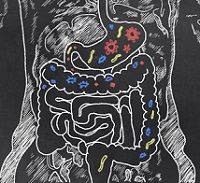Article
Fecal Microbiota Transplant has Ancient Roots
Author(s):
The study authors learned that fecal microbial transplant was used in the society of fourth century China, when “yellow soup†was thought to treat diarrhea. However, contemporary treatments see the fecal transfer through donor feces to break the imbalance and infection in patients with C. difficile multiple recurrent infections.

Fecal microbiota transplant has an efficacy rate of 90% in patients with multiple recurrent Clostridium difficile (C. difficile) infection, according to findings published in the American Association of Critical Care Nurses’ publication AACN Advanced Critical Care.
The study authors reviewed the current epidemiology of C. difficile infection in order to determine procedure efficacy among patients in multiple recurrent infection settings. They examined toxigenic and non-toxigenic strains, risk factors for infection, recurrent infection, methods of diagnosis, existing first line therapies for C. difficile infection, the role of fecal microbiota transplant for multiple recurrent infections, and the potential use of fecal microbiota transplant for patients with severe or refractory infection.
The researchers noted that most patients do have a clinical response to existing antimicrobial therapies, but recurrent infection develops in nearly a third of patients. The investigators added that C. difficile is a major source of morbidity and mortality for patients in hospital settings.
The study authors learned that fecal microbial transplant was used in the society of fourth century China, when “yellow soup” was thought to treat diarrhea. However, contemporary treatments see the fecal transfer through donor feces to break the imbalance and infection in patients with C. difficile multiple recurrent infections.
“FMT is gaining in prominence in many parts of the world, and the future of [C. difficile] treatment will most likely involve more advanced forms of FMT, such as capsules, advanced probiotics and prebiotics,” co-author Alyssa Liubakka, MD said in a press release.
Further Coverage:
Researchers Enlist Cattle Dewormers in Fight Against C. difficile Infections
Researchers Work to Develop a Nonantibiotic Treatment for Clostridium difficile
Latest News and Updates on C. Difficile Infection Management and Treatment





